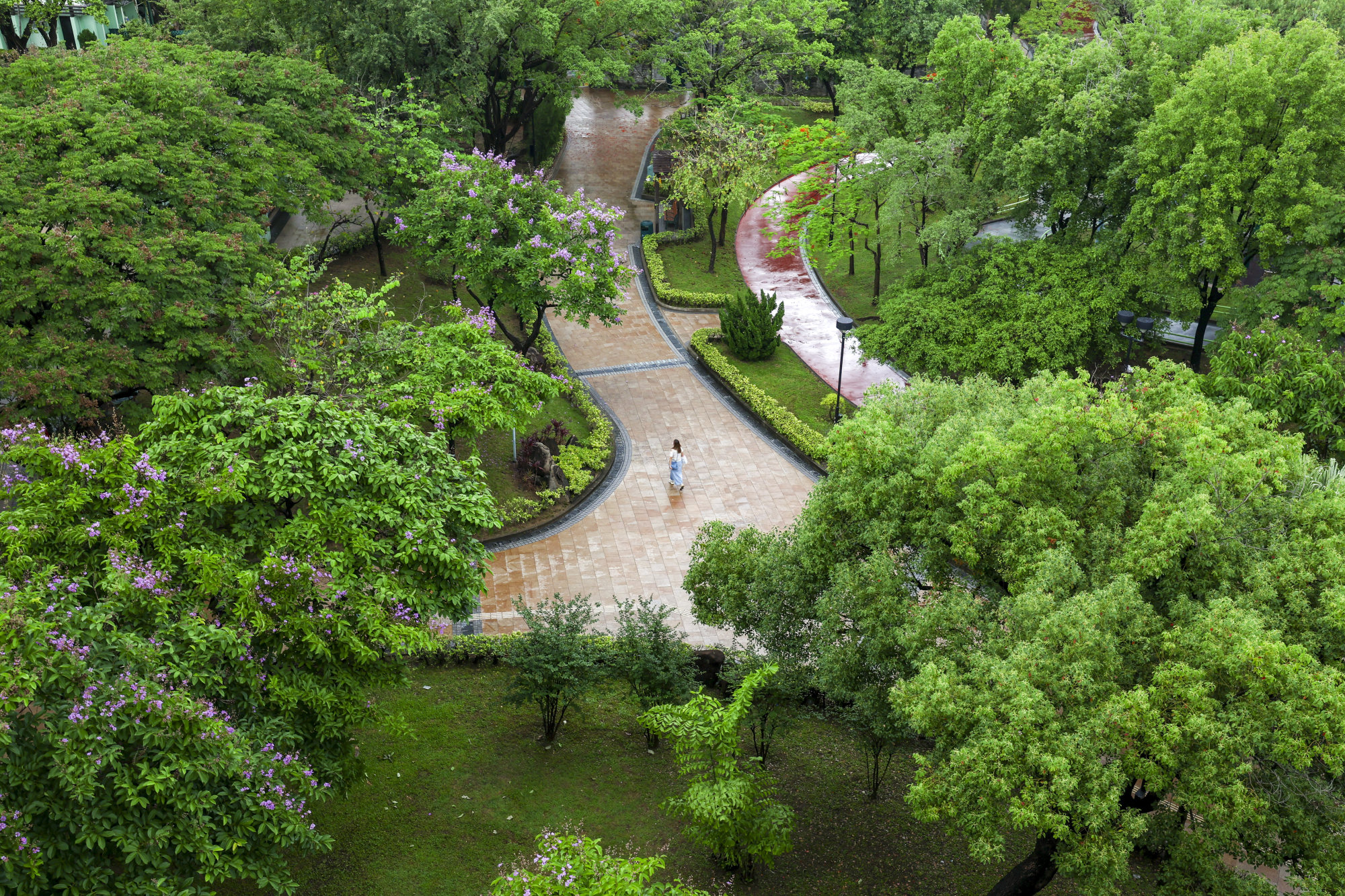
Hong Kong conservationists call for protection of old Chinese banyan tree, historical dispensary in Kowloon City
- Conservancy Association calls for Urban Renewal Authority to avoid transplanting 12-metre-tall Chinese banyan, says efforts could harm its ability to absorb nutrients
- Groups also urges government to protect Lee Kee Memorial Dispensary, citing building’s ‘huge importance to Kowloon City’s development’, social history
An old Chinese banyan tree and a historical dispensary in Kowloon City are too valuable to be relocated or removed as the result of a redevelopment project and should be preserved where they are, a Hong Kong conservation group has said.
The 12-metre-tall Chinese banyan has stood in front of the Lee Kee Memorial Dispensary in Kowloon City for about six decades. With an umbrella-shaped crown spreading out for 10 metres and aerial roots dangling down from the branches, the tree generously overshadows passers-by during the summer heat and is also a mini-habitat for birds.
“It is really rare to have a tree like this in an urban area like Kowloon City. The tree serves as a landmark of the district,” said Ken So Kwok-yin, director of the Conservancy Association and a certified tree worker.
The tree and the dispensary are located at the edge of a redevelopment site marked out by the Urban Renewal Authority as part of its latest project.
Announced in May, the HK$15 billion (US$1.9 billion) scheme will redevelop the area between Carpenter Road and Nga Tsin Wai Road, relocating 1,600 households from aged buildings and producing 4,350 flats over 15 years.
Hong Kong’s Thai residents reflect on changes as redevelopment looms
While the authority had indicated that it planned to transplant some trees in the area for preservation, So said he did not consider the plan ideal, explaining that it involved trimming the Chinese banyan’s roots and the crown, which would harm its ability to absorb nutrients.
“Transplanting involves cutting the tree’s ‘head and toes’, it is very difficult to keep its original state. Its preservation value will be discounted and it also depends on how much resources will be spent, ” So said, adding that the tree should be preserved on-site.
The association director also said a tree survey by the authority had already concluded that the enormous Chinese banyan had a low suitability for transplanting.
Despite its rare size, the Chinese banyan, with a diameter of 1.4 metres, is not among the 459 entries listed in the government’s “register of old and valuable trees”, which serves to protect those of large size, rarity, old age, outstanding form and cultural or historical significance.
So said the iconic tree at Kowloon City had an even thicker trunk than the 25 Chinese banyans located along thoroughfare Nathan Road that were listed in the register.

The survey also identified another 21 trees for transplanting, with most of the remaining 107 in the area set to be cut down.
In a reply to the Post on Friday, the authority said it was necessary to transplant the tree because it stood at the proposed site of a footbridge that would connect the government complex and residential area.
It said the authority would appoint a consultant to devise how to transplant trees to spots within the redevelopment site, such as future pedestrian avenues or market square.
Pointing to a similar procedure during the Kwun Tong Town Centre project, the authority said it had “successful” experiences in transplanting trees of similar species and scale. It added that additional trees would be planted to compensate for the loss of existing ones.
The Conservancy Association, however, said the Chinese banyan in Kwun Tong was only in an “acceptable” condition after being transplanted in 2011 to a park 70 metres away from its original location. The environmental group noted the tree’s crown had reduced in size by 20 per cent.
Why Hong Kong must strike a balance between development and conservation
Director So also called for the preservation of the tree’s home, the Lee Kee Memorial Dispensary, which was the first of its kind to be set up by the Kai Fong Welfare Association, a local mutual aid organisation that emerged in 1952.
“The dispensary has huge importance to Kowloon City’s development and is part of the social history,” said Peter Li Siu-man, the association’s senior campaign manager.
He said the dispensary had two midwives stationed there to provide at-home childbirth services for low-income residents, with residents previously forced to travel further out to Kowloon Hospital and Kwong Wah Hospital.
‘Little Thailand’ renewal plan leaves Hongkongers torn over losing community ties
But a panel of experts from the government’s Antiquities Advisory Board recently concluded that the dispensary did not deserve a historic grade for conservation.
The decision means the Urban Renewal Authority could demolish the clinic to make way for a new public health centre as part of a proposed government complex to be located at Carpenter Road Park.
Citing a study completed by its conservation architect, the authority said the dispensary had low architectural value, with only the building’s foundation stone and stela considered worth preserving.
It added that appropriate arrangements would be made based on the architect’s recommendations.

